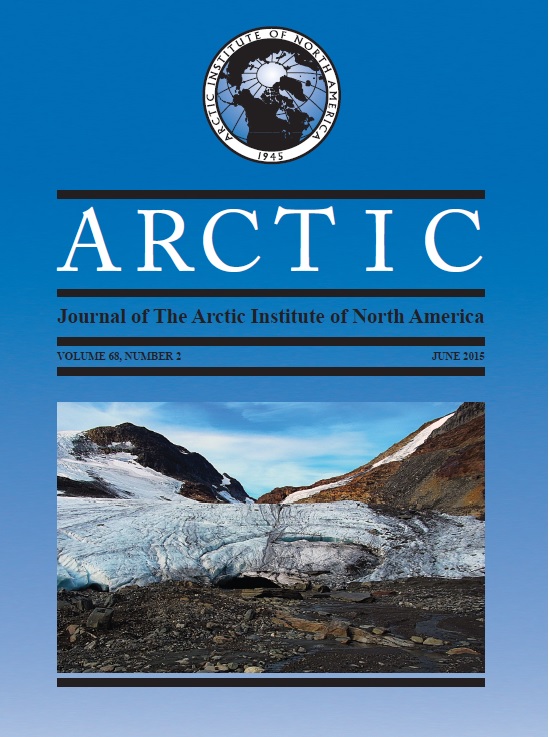New Aspects of High-Mountain Palaeobiogeography: A Synthesis of Data from Forefields of Receding Glaciers and Ice Patches in the Tärna and Kebnekaise Mountains, Swedish Lapland
DOI :
https://doi.org/10.14430/arctic4480Mots-clés :
glaciers, croissance des arbres, mégafossiles, macrofossiles, Holocène, datation par le carbone 14, changement climatique, Scandes suédoisesRésumé
Le recul récent de la glace de glacier, de la neige pérenne et des bancs de glace en haute montagne a permis de découvrir des mégafossiles et des macrofossiles de restes d’arbres et de tourbe, ce qui offre une nouvelle source d’histoire de la végétation alpine des Scandes en haute altitude pendant l’Holocène. La datation au carbone 14 de 90 mégafossiles d’arbres en provenance de la Laponie suédoise, dont 29 n’avaient jamais fait l’objet d’une publication, donne des résultats variant de 11 980 à 1 950 années cal. BP. Au cours de l’intervalle allant de 9 500 à 8 500 années cal. BP, le bouleau de montagne (Betula pubescens ssp. czerepanovii) et le pin sylvestre (Pinus sylvestris) poussaient à une hauteur de 600 à 700 m plus élevée qu’aujourd’hui, ce qui représente une découverte à la fois nouvelle et remarquable. Subséquemment, la densité des arbres a diminué graduellement en haute altitude, et au fur et à mesure que la limite forestière s’est mise à descendre, le rapport entre Betula et Pinus s’est accru. La croissance des arbres a cessé vers 4 500 années cal. BP, probablement en raison du retour de la glace et de la neige pérennes. Un bref épisode de reprise de la croissance des arbres de Betula indique la présence de conditions plus chaudes qu’à présent il y a environ 2 000 ans. Entre 8 500 et 7 300 années cal. BP environ, Picea abies, Larix sibirica, Populus tremula, Sorbus aucuparia et Alnus incana étaient des espèces subordonnées sur une couverture morte dominée par des espèces végétales caractéristiques de terrains boisés préalpins ou subalpins. La croissance des arbres à une hauteur de 700 m plus élevée qu’aujourd’hui il y a environ 9 500 années cal. BP implique qu’à cette époque, les températures estivales pouvaient être plus chaudes dans une mesure de 3,0 ˚C que les températures actuelles (donnée redressée en fonction du soulèvement de la terre). Cette différence inférée de température entre l’Holocène précoce et le présent converge avec les changements caractérisant les paramètres orbitaux de la Terre.


